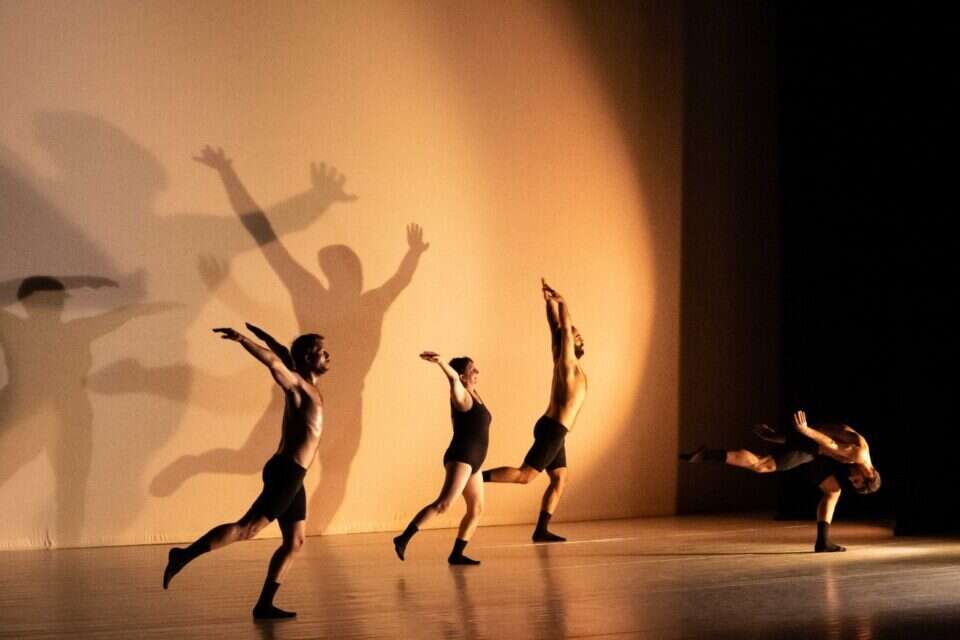The show "Graces", which closed the cluster of international shows that were hosted at the "Tel Aviv Dance" festival of the Susan Dellal Center, opened with the entrance of three dancers in black pants, next to whom the creator of the show, the Italian choreographer Silvia Gribaudi, is positioned, dressed in a black leotard.
She observes them, and they observe her, and it is clear to everyone - including the audience - that she deviates from the conventional "dancer" appearance, certainly when the bodies that surround her are a living illustration of the pictorial description "built for talismans".
This scene manages to distill some truth that deserves to be recognized: dance is an art that still involves the expectations of an audience, some of whom come to shows to see dancers touch the sky (metaphorically, and to a large extent also literally), and perform physical stunts that "normal" people can only fantasize about.
The roots of this concept can be found in ballet, the first institutionalized genre in the history of dance that used the dance language to realize values of formal beauty and technical virtuosity.
Many years and genres have passed since ballet, and in contemporary dance the dancing body is already situated on the ground of reality - both in terms of its devotion to gravity and in terms of its external visibility, which celebrates the variety of body possibilities and identities.
However, the contemporary creators often return to the Baltic heritage to remind us of where we came from and how far we have progressed, but also to confront us with the fact that perceptions of beauty - in dance and in society - still lie on our bodies as a burden.
Silvia Garibaudi chooses to do this in "Graces" through humor and irony: for long minutes she and her dancers perform with abysmal seriousness clearly non-virtuosic actions, such as skipping or snapping their fingers, and then take the time to regulate their breathing from the effort (with a theatrical demonstration of how adequate their hearts are strongly), and above all - code modestly and say thank you, over and over again, and thus squeeze non-stop applause from the audience, who happily "flows" with the manipulation.
In this context, it is difficult not to think of the immortal section from the work of the choreographer Pina Bausch, "Claws" (1978), in which the iconic dancer from her troupe, Dominique Marcy, shouts at the spectators in frustration, "What else do you want to see?", and as a rhetorical answer - performs a complex element each time Another from the repertoire of the ballet language, in a desperate attempt to satisfy the expectations of the audience, who indeed applaud him enthusiastically after each virtuoso display.
But while Bausch presented through this scene (and many others in her other works) a bleak picture of dance as an arena that polices the body in the spirit of repressive aesthetic ideals, Garibaudi offers a lighter look at the performance-audience relationship, reminding us - dancers and people - that we can simply remove ourselves from the game
Correspondingly, the organizing mechanism of "Chesedim" is an invitation to surrender to a choreographic-theatrical movement that creates aesthetically pleasing or performance-impressive stage images, and at the same time breaks them down to the point of being laughable: at one moment the performers are positioned in a variety of pompous positions, adorned with flowers in their armpits, on their buttocks, or on their nipples;
In another they experiment with a movement sequence whose motivations Silvia Garibaudi explains with a lot of words that mean nothing, sending the viewers to "take the time and find it out";
And at a certain point it seems that there is a reversal in the array of forces, and those who are positioned as the object of observation who is required to meet expectations are the spectators themselves: the performers point to people in the audience, and express their approval with a "like" gesture and an enthusiastic cry of "Magnifico!".
About half an hour after the opening, Garibaudi says "this is the work so far, so thank you very much", leaving the viewers wondering whether to applaud and leave, or stay to realize that this is another joke at their expense.
The beauty of simplicity
To alleviate the embarrassment, one of the dancers offers to tell about the source of inspiration for the work: Antonio Canova's neoclassical sculpture "The Three Graces" (1812-1817), which shows the daughters of Zeus and the gifts they hold for humanity: beauty and youth, gaiety and majesty.
The discussion leads to the question "What is abundance?", and first the required options are thrown from the audience - money, children, livelihood, love, and more.
But when the answer "art" comes, something sharpens about the grace that drives Silvia Garibaudi's creative action, and becomes fully clear at the end of the show: dancers can stand in sketched positions and be as beautiful as ancient Italian marble statues, but they will be revealed in their full glory precisely when they joyfully slide on a stage filled with water - The simplest, the most foolhardy, the most humane.
were we wrong
We will fix it!
If you found an error in the article, we would appreciate it if you shared it with us

